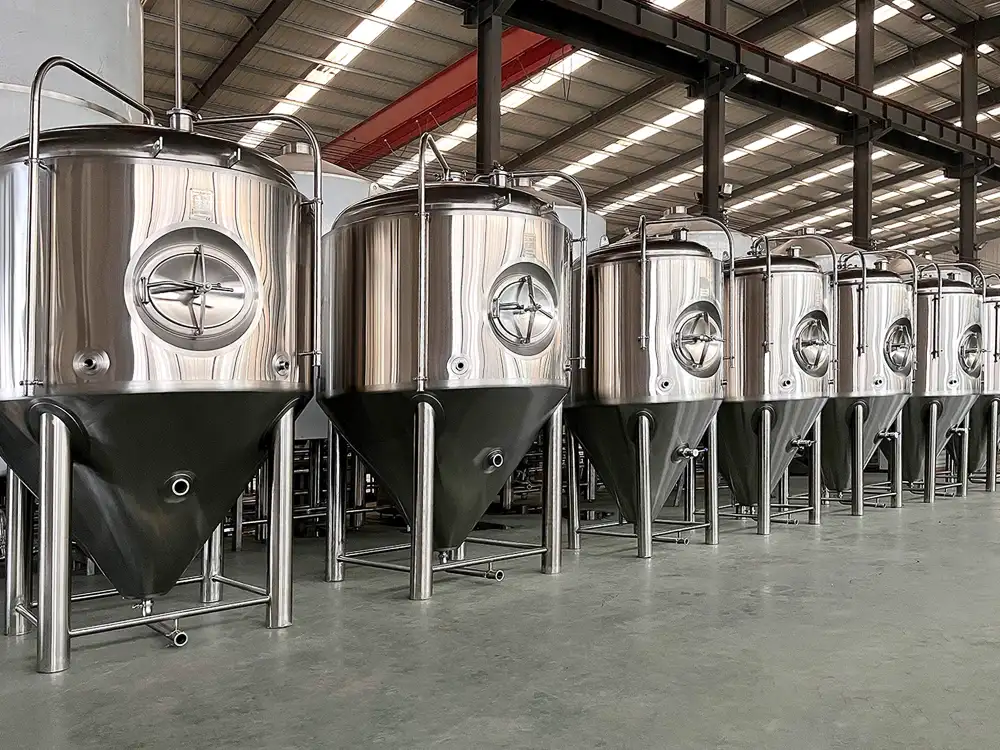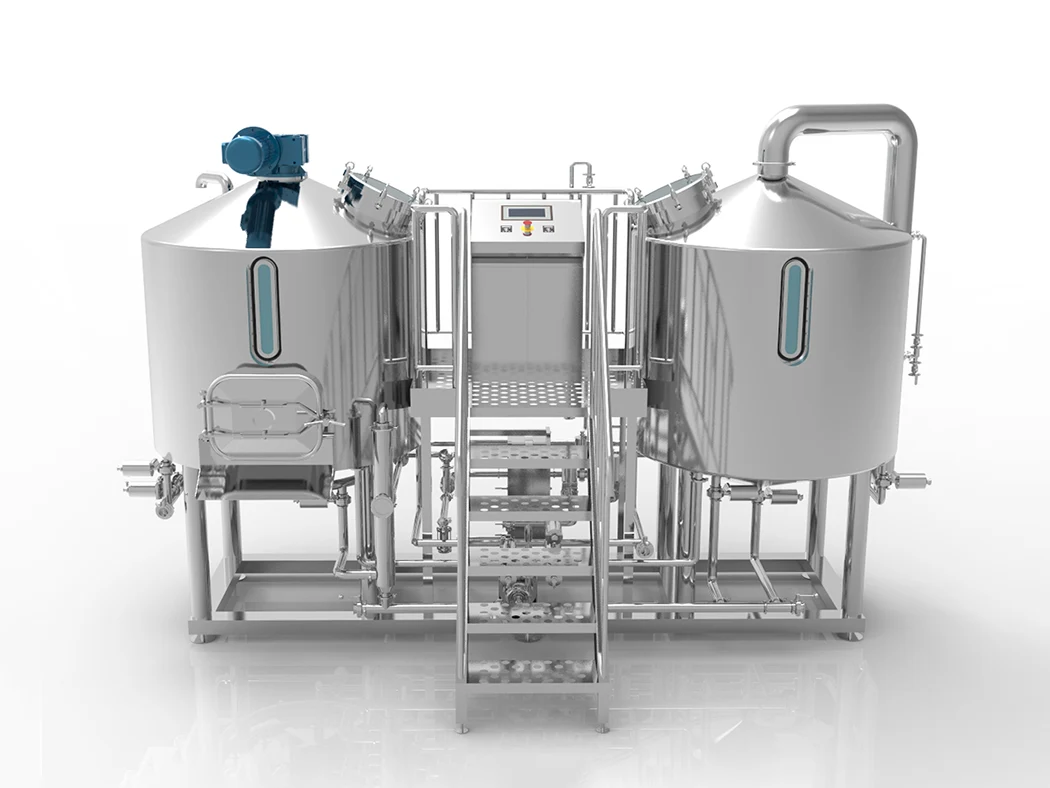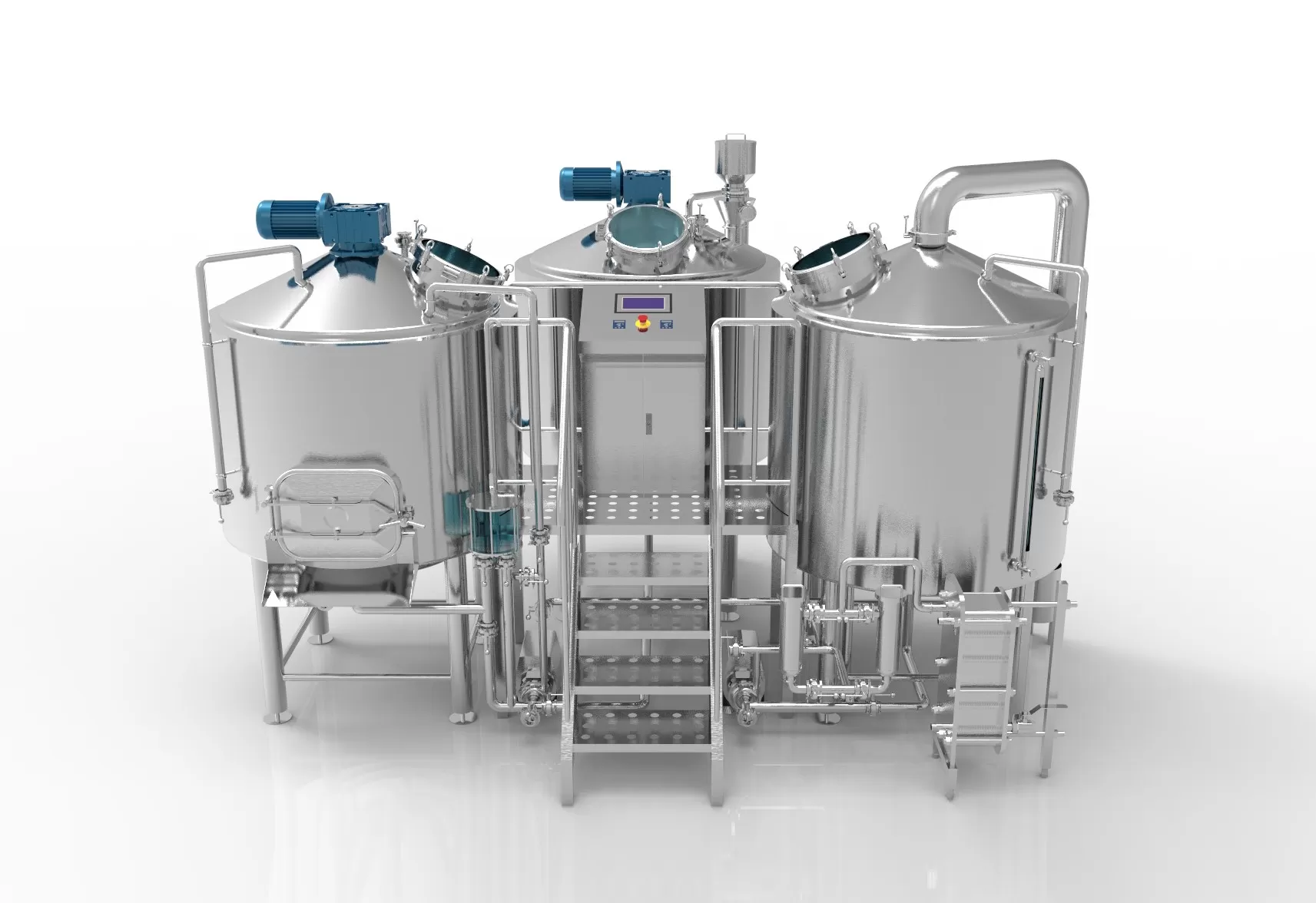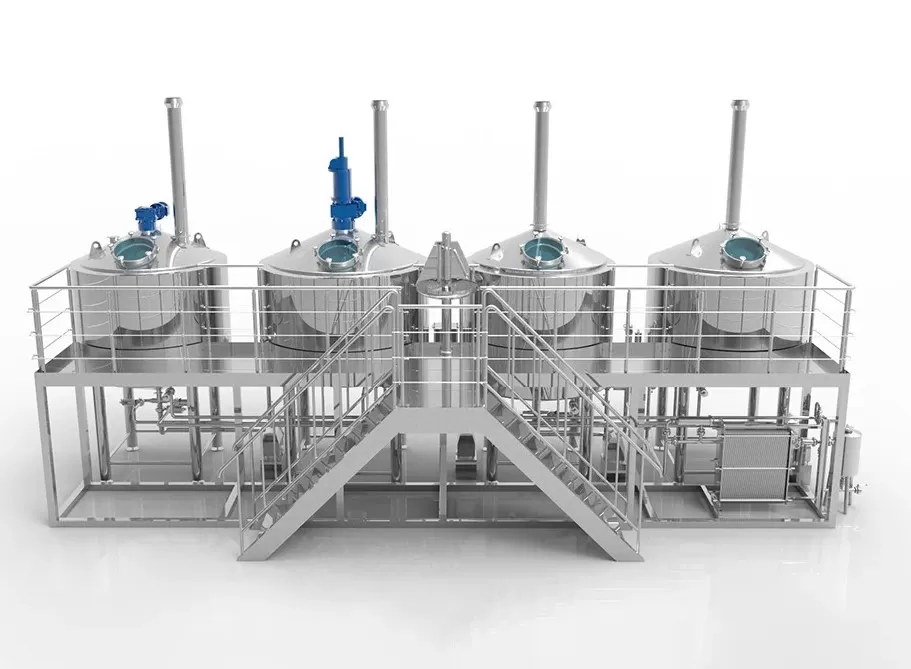Is your kombucha not quite hitting that crisp, fizzy perfection? Maybe your brewing setup is holding you back. Outdated, inconsistent equipment often causes disappointing results and makes scaling your operation a headache. The right kombucha brewing equipment can transform both your quality and efficiency—giving you peace of mind and a beverage your customers (or friends) will crave.
What is the best equipment for brewing kombucha at scale?
Kombucha brewing equipment includes specialized fermenters, stainless steel tanks, brewing vessels, bottling tools, and sanitation systems designed to optimize the kombucha fermentation process, maintain consistent quality, and support both small-batch and commercial production needs.
What Makes Kombucha Brewing Unique?
Kombucha is a fermented sweet tea beverage, created using a symbiotic culture of bacteria and yeast (SCOBY). Unlike brewing beer or cider, kombucha brewing requires careful management of temperature, PH, and oxygen. Every batch depends on the delicate balance between sugar, tea, bacteria, and yeast. Because kombucha is a living beverage, even minor equipment flaws or inconsistent environmental controls can impact taste, fizz, and safety.
Our experience as a brewing equipment manufacturing plant has shown that small changes in fermenter design, material quality, or temperature control can make the difference between an average and a top-shelf kombucha. Breweries and homebrew enthusiasts alike benefit from investing in equipment that prioritizes hygiene, ease of use, and scalability.

Essential Kombucha Brewing Equipment for Every Batch
Whether you’re starting your first gallon at home or scaling up to a kombucha brewery, a few pieces of equipment are absolutely essential:
Core Kombucha Brewing Equipment:
| Ausrüstung | Use | Material-Optionen |
|---|---|---|
| Gärgefäß | Primary fermenting container | Glass, Stainless Steel |
| Brühkessel | Boiling tea and dissolving sugar | Rostfreier Stahl |
| PH Test Strips/Monitor | Measuring acidity for quality control | - |
| Heat Mat | Keeping fermentation temperature optimal | - |
| Bottles (Swing Top, Glass) | Packaging finished kombucha | Glas |
| Filter/Strainer | Removing particles before bottling | Stainless Steel, Cloth |
| Spigot/Lid | Dispensing, air control | Stainless Steel, BPA-Free Plastic |
- Gärbehälter: Glass jars (like the classic 1-gallon glass kombucha jar) are popular for their visibility and ease of cleaning. Commercial operations may prefer stainless steel fermenters for durability, insulation, and food safety.
- PH test strips are critical for safe, high-quality kombucha brewing. Kombucha is usually finished at a PH of 2.5–3.5.
- Swing top bottles (16 oz or larger) allow for easy carbonation and secure storage.
See our specialized kombucha brewing vessel solutions for more details.
Glass vs. Stainless Steel: Which Fermenter is Best?
When it comes to fermenting kombucha, the debate often centers on Glas versus rostfreier Stahl:
- Glass Jars:
- Affordable, non-reactive, and easy to inspect visually.
- Suitable for homebrew and small batch production.
- Glass can break and is heavy, especially in large sizes.
- Stainless Steel Fermenters:
- Preferred in commercial kombucha production.
- Durable, easy to clean, and excellent for temperature control.
- Higher upfront cost, but much longer lifespan.
Our Tip: For serious quality and scale, stainless steel is the gold standard. Check out our stainless steel fermenter lineup for professional options.

How to Choose the Right Kombucha Brewing Kit
Choosing a kombucha brewing kit is about finding the perfect match for your goals. Consider:
- Größe der Charge: Are you brewing 1 gallon at a time, or planning commercial-scale production?
- Material: Does your kit include glass jars, stainless tanks, or both?
- Included Supplies: Quality kombucha brewing kits should come with a SCOBY, PH test strips, swing top bottles, cloth covers, and spigots.
- Temperature Support: Look for kits with a heat mat or insulation for consistent fermentation.
Starter-Kits are a great way for new brewers to get everything you need, while larger, modular setups suit ambitious kombucha breweries. If you want flexibility to experiment with green tea, jun, or secondary fermentation, choose equipment that adapts to your needs.
Explore advanced kombucha brewing kits and kombucha brewing supplies to upgrade your results.
Setting Up a Commercial Kombucha Brewery: Equipment List
For professional kombucha production, you need more than just jars and bottles. Here’s what a typical commercial kombucha brewery setup includes:
Commercial Kombucha Brewing Equipment Table
| Kategorie | Ausrüstung | Funktion |
|---|---|---|
| Brühsystem | Brew kettle, sweet tea preparation cart | Tea and sugar blending, heat control |
| Gärung | Stainless steel fermenters, temperature monitoring | Controlled kombucha fermentation |
| Qualitätskontrolle | PH gauge, lab-grade thermometer | Consistency, safety |
| Abfüllung | Swing top bottles, capper, filling cart | Sanitary filling, packaging, carbonation |
| Filtrierung | Fine mesh filter, sanitary pump | Remove sediment, enhance clarity |
| Lagerung | Cold storage tank, finished product tanks | Store ready-to-ship kombucha |
Key features include integrated spigots for easy transfer, sanitary fittings, and modular systems for batch expansion.
See real-world examples at our nano brewery equipment project page.

How to Maintain the Perfect Fermentation Temperature
Temperatur is one of the most crucial elements for quality kombucha brewing.
The ideal range for kombucha fermentation is 22–29°C (72–85°F). Too cool, and bacteria and yeast stall. Too hot, and off-flavors or dangerous bacteria can develop.
- Use a heat mat or insulated fermenter cart to keep your batch steady.
- Digital thermometers and temperature gauge controllers provide precision.
- Stainless steel fermenters help buffer against rapid temperature swings.
Expert Tip: Monitor and record temperature daily, especially when scaling batches. For more, see our guide on brewery equipment temperature management.
The Role of PH, Heat Mats, and Monitoring Tools
Consistent PH is critical in kombucha brewing equipment setups.
- Use PH test strips or digital PH meters for every batch.
- Ensure your heat mat is calibrated and does not overheat or create hot spots.
- Consider a temperature and PH data logger for commercial production—accuracy reduces risk and waste.
Tatsache: Most commercial kombucha breweries use real-time PH monitoring to comply with food safety standards and to produce reliably tangy, safe kombucha every time.
Bottling Kombucha: Jars, Swing Top Bottles, and More
After fermentation, bottling is a crucial step for carbonation, flavoring, and presentation.
- Glass swing top bottles (16 oz/500 ml):
The gold standard for maintaining carbonation and a professional look. - Gallon glass jars:
Good for secondary fermentation or bulk homebrew storage. - Caps and lids:
Ensure a tight, leak-free seal. Avoid reusing old caps as their integrity can degrade over time. - Spigot bottles:
Helpful for easy dispensing and sampling during production.
Proper bottling not only preserves kombucha flavor but also ensures shelf life and customer safety. Discover our beer bottle and filling solutions for commercial needs.
Troubleshooting Common Kombucha Equipment Issues
Every kombucha brewer—homebrew enthusiast or professional—runs into equipment challenges:
- PH drifting out of range?
Clean all vessels thoroughly and replace PH test strips regularly. - Temperature fluctuation?
Check your heat mat and fermenter insulation, especially during seasonal changes. - Weak carbonation?
Inspect bottles and swing tops for leaks. Ensure sugar and secondary fermentation timing is correct.
Profi-Tipp: Schedule regular equipment maintenance and cleaning—especially for stainless steel tanks, spigots, and any reusable cloth or filter bags.
FAQs About Kombucha Brewing Equipment
How big should my kombucha fermenter be?
Start with a 1-gallon glass kombucha jar for homebrew or a 100+ liter stainless steel fermenter for a kombucha brewery. Match your equipment to your production goals.
Do I need a special PH test strip for kombucha?
Yes, standard PH test strips for food and beverage are ideal. Aim for a PH between 2.5 and 3.5 at the end of fermentation for quality and safety.
Can I use beer brewing equipment for kombucha?
Some equipment, like kettles and fermenters, can be used for both. Always clean thoroughly to prevent cross-contamination.
How can I keep my kombucha at the right temperature?
Use a heat mat, insulated vessel, or temperature-controlled fermentation tank for best results.
What is the best bottle for kombucha carbonation?
Swing top glass bottles (16 oz) are best for retaining carbonation and preventing leaks. Always test bottles for durability before reuse.
How do I sanitize kombucha brewing supplies?
Use food-grade sanitizer on all vessels, lids, and utensils before each batch to protect against harmful bacteria and ensure quality kombucha brewing.
Related Internal Resources
- Kombucha-Brauausrüstung
- Stainless Steel Fermenter Solutions
- Nano Brewery Equipment for Small Batch Production
- Beer Bottle and Filling Equipment
- Kommerzielle Brauereianlagen
Wichtigste Erkenntnisse
- Kombucha brewing equipment quality directly impacts batch consistency, safety, and flavor.
- Choose the right fermenter material—glass for homebrew, stainless steel for commercial breweries.
- Maintain strict control over temperature and PH with appropriate monitoring equipment.
- Use swing top bottles for safe, effective carbonation and presentation.
- Regular equipment maintenance and sanitation protect both flavor and customer health.
- Scale up confidently with equipment designed for kombucha production, not just generic brewing.
- Rely on expert support and global service when selecting your kombucha brewing supplies.
Ready to take your kombucha brewing to the next level? Explore premium kombucha brewing equipment and turnkey solutions for breweries of any size.
If you’d like this split into more parts, or need further visuals (tables, charts, diagrams), just let me know!




